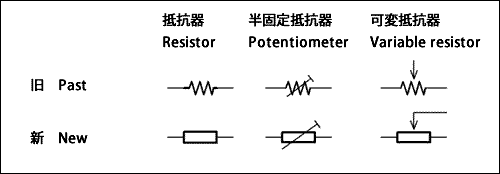"R" represents the coefficient of proportionality and is called resistance (electrical resistance). It is the quantity symbol and Ω (ohm) is the unit symbol. The circuit symbol is as shown in the following figure.
[Resistor circuit symbols]

When the electrical resistance is high, it is difficult for the current to flow, and when the electrical resistance is low, it is easy for the current to flow.
Using this phenomenon, resistor, as an electronic component, provide constant current flow through a circuit or current adjustment as needed. Resistors are also used to reduce or divide voltage.
As seen from above, resistors along with capacitors and inductors (coil) are the major passive components, which are essential basic components for electronic circuits.